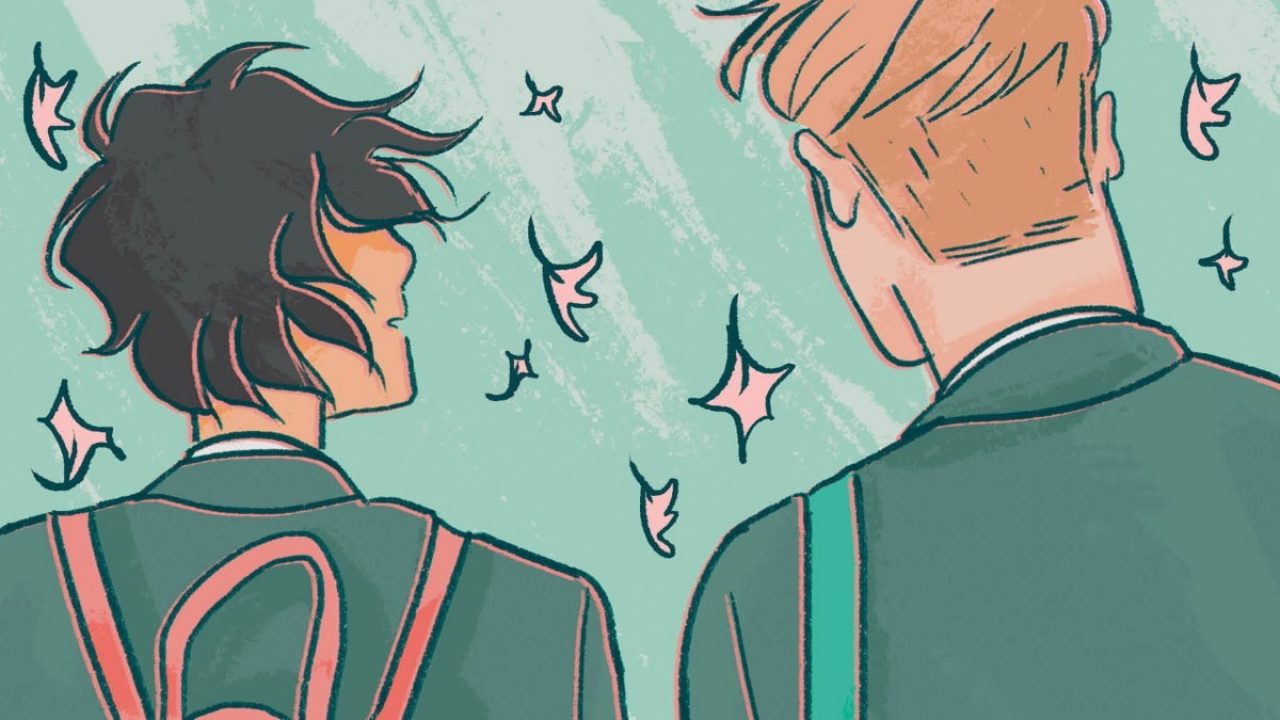Table of Contents Show
Trigger Warning: this article discusses surrounding eating disorders, self-harm, OCD, and depression; Spoiler Warning: the plots and endings of the volumes will be discussed throughout the article.
Heartstopper (2018-present) by Alice Oseman is a webcomic featured on Webtoon that has since been published into four volumes, covering the intertwining lives of two teens named Charlie and Nick. The volume is especially important due to the plot centering on Charlie’s battle with eating disorders and self-harm, along with other mental health issues. By using a relatable character like Charlie to discuss hard subjects like mental health, it both normalizes asking for help while also teaching readers how to help loved ones suffering from mental health problems. Heartstopper continues to teach its young audience important lessons using relatable characters and storylines, and more content like this needs to be written and published.
Previously On Heartstopper (2018-present)
The past three volumes have been about Nick and Charlie figuring out their romantic feelings for each other and navigating their relationship once they get together.
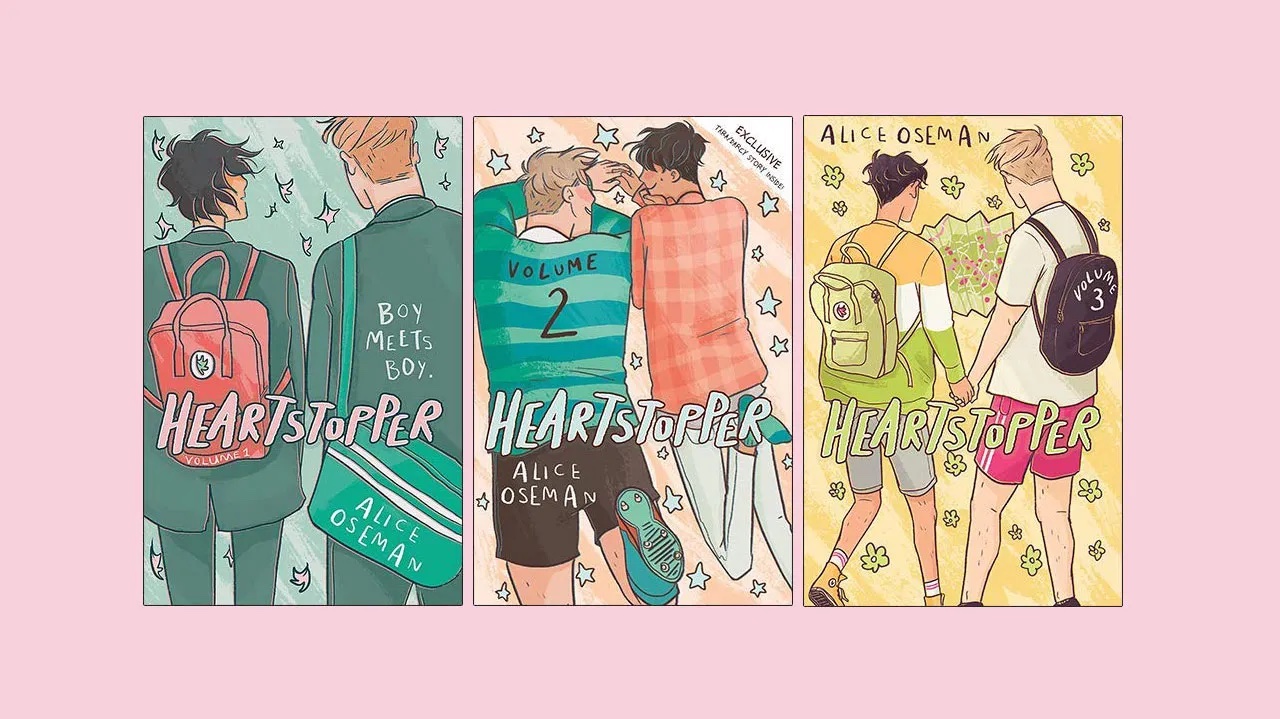
The first volume’s central conflict is the slow burn realization that the two boys like each other romantically. Charlie struggles with not wanting to believe his feelings for Nick are true due to being convinced Nick is straight, and pushes his feelings aside, in order not to get hurt as he did with his previous abusive relationships. Nick, on the other hand, is grappling with the strange feelings bubbling up whenever he thinks about his friend. The two eventually kiss and admit their feelings, but the first volume is left on a cliffhanger when Nick leaves Charlie behind to go talk to his friends in a fit of panic. Charlie believes he was rejected and starts crying.
The second volume’s central conflict is Nick’s internal struggle to comprehend his sexuality. He apologizes to Charlie, and the two make up. The new couple takes the relationship slowly since Nick is still figuring himself out, but when he meets Tara and Darcy, Charlie’s friends who are in a relationship, he gets some advice that helps him understand his sexuality better. The book comes to a peak when Nick’s friends start insulting Charlie with homophobic language, causing Nick to realize who his real friends are and making him more reassured in his sexuality.
The book ends with Nick and Charlie spending the day at the beach, where Nick voices his sexuality and later comes out to his mom. The third volume is where mental health awareness starts to rear its head. Its central conflict is Nick becoming comfortable with the idea of telling the school about their relationship — and, consequently, his sexuality. The pair grapple with the best way to tell their friends and the rest of the class. Charlie doesn’t tell his friend Tao about Nick right away in fear that he will inadvertently expose them, which leads Tao to feel like a bad friend. Charlie faints from not eating all day, showing how dangerous his eating disorder has grown. Tao and Charlie makeup, Nick and Charlie come out to their class as a couple, and it ends with Nick researching eating disorders.
Heartstopper: Volume 4 (2022)’s Discussion Of Mental Health
In volume four, with the boys settled into their relationship, Nick starts coming up with a plan to address Charlie’s eating disorder in the best way possible.
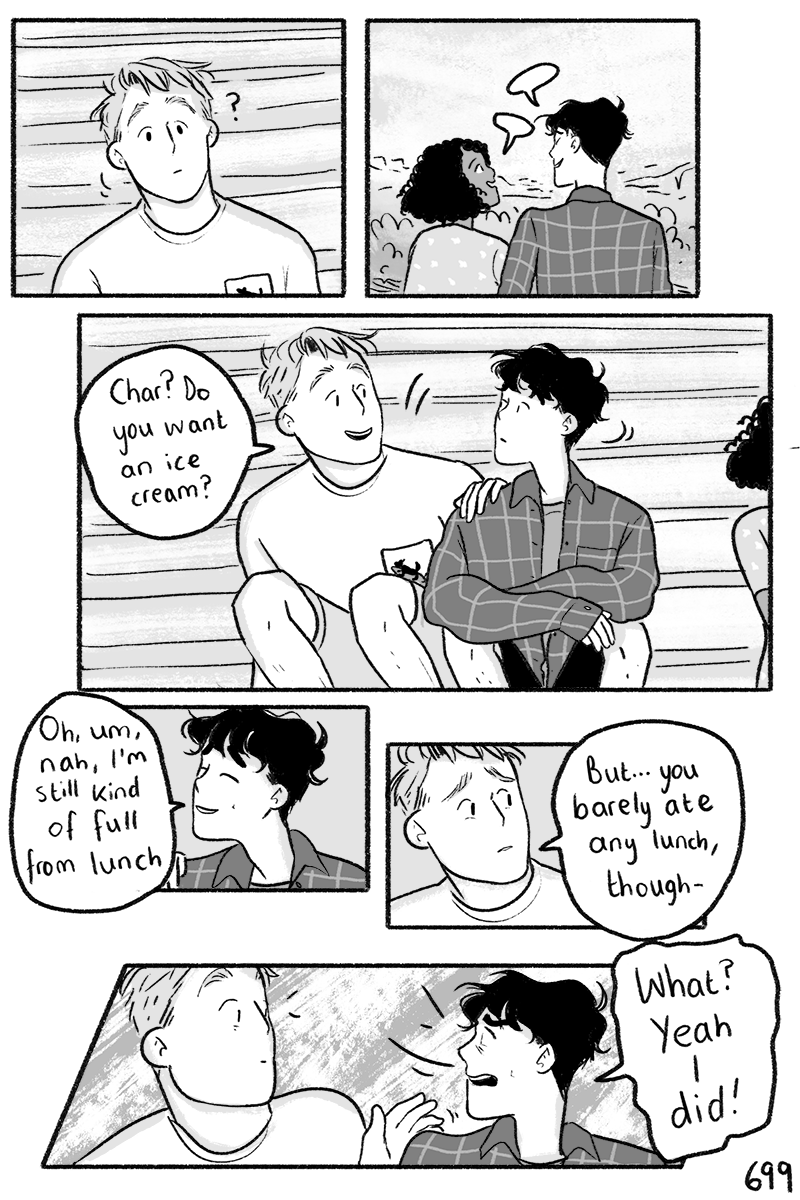
Nick started noticing Charlie’s strange behavior toward food in volume three, culminating in him looking up “eating disorders” in the final panel of the book. Now, having come up with a plan to address it after doing thorough research, he tells Charlie he thinks he has an eating disorder while out at the beach with friends. Charlie shares that he feels shame when admitting it — citing it as a “girl’s thing” — and agrees to tell his parents in order to get help. However, ongoing arguments with Charlie’s mother, guilt, and the fact that Nick is away on vacation prevents Charlie from asking for help or telling his parents.
Charlie distracts himself from his problems by confessing his love for Nick, and that honeymoon period takes precedence over his mental health. During a family dinner, he panics when it comes time to eat and seeks refuge in calling Nick. When Charlie is called away, they hang up, and Nick asks his mother for advice. “I know it feels like you’re both each other’s whole world, but that dependency isn’t healthy for either of you,” she says. “Love can’t cure mental illness.” This is one of the most important yet subtle lessons Heartstopper addresses using Charlie and Nick, amongst others.
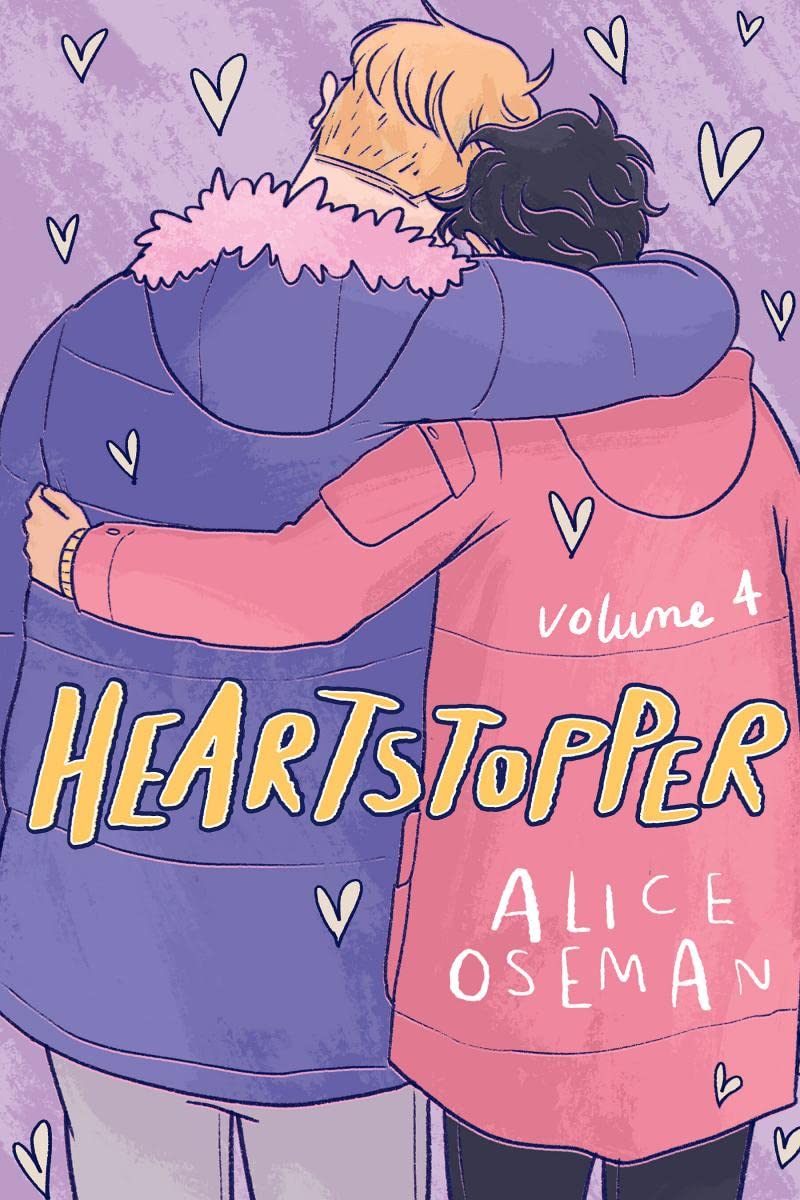
Most of this volume is told from Nick’s perspective afterward through a journal entry, where he reveals Charlie’s mental health worsened tenfold, and he relapsed in self-harm. Charlie then stays at a psychiatric hospital for a few weeks, where he comes back with a game plan to start on his healing and recovery journey. Charlie comes home with a therapist, a journal to help him work through his emotions, and the knowledge that he has anorexia and OCD. Giving voice to these disorders, giving them a name made those feelings of control and intrusive thoughts concrete in Charlie’s mind. This leads him to take them more seriously and be able to pinpoint where exactly he can improve and change his mindset.
He also realizes, through his therapist, that the trauma he endured (getting outed, the bullying, Ben) all contributed to his mental illnesses. Finally, Charlie realizes that improving his mental health is not a straightforward journey, and there will be good days and bad days. He cannot rely on Nick for everything — that’s why he has an extended support network of friends, family, and mental health professionals. He begins to slowly warm up to eating food without having a mandated schedule or listening to the voices in his head.
Readers can only hope that Charlie improves after this experience, and with all the support and love he has, it will bring good omens to his future.
The Various Themes Of Mental Health In Volume 4 (2022)
This Heartstopper volume addresses several issues about mental health and surrounding it: directly discussing eating disorders, OCD, and self-harm, bringing awareness to symptoms and ways to help, and educating people on healthy, loving relationships. This is one of the most realistic and non-demonizing portrayals of OCD out there, where it isn’t portrayed as something “quirky” or homicidal, but as something dangerous to the person suffering from it. The webcomic realistically portrayed Charlie having uncontrollable thoughts that manifested in his eating, which is the definition of OCD.
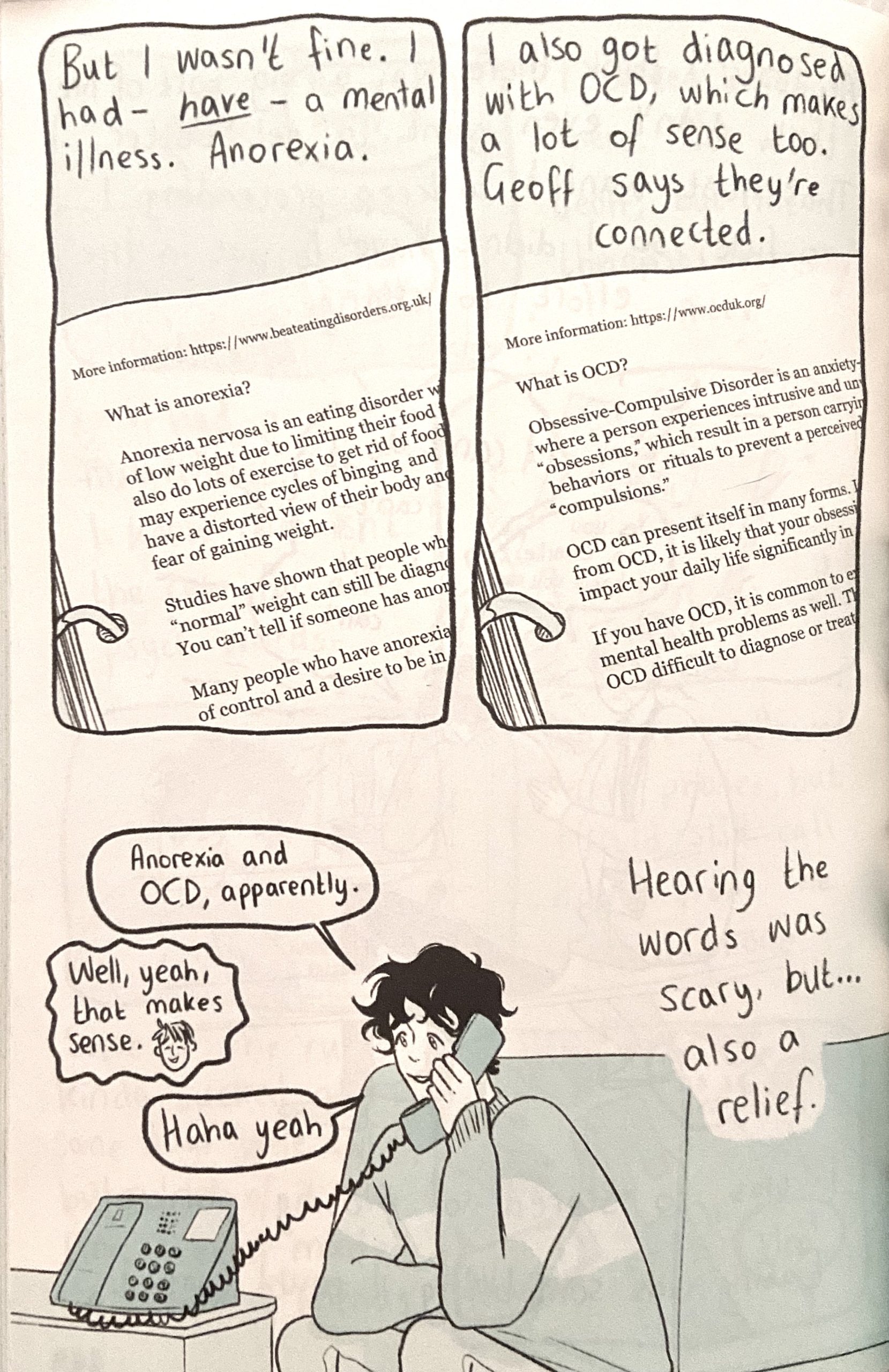
Heartstopper brings to light how mental health issues aren’t always obvious. Nick only starts noticing Charlie’s eating disorder, amongst other mental health issues by spending time with Charlie outside of school. This shows that many times, a person’s mental health problems remain virtually invisible until they’re revealed upon closer inspection. Charlie seems fine on the outside — sure, he’s a little skinny, but many growing teen boys are. He also participates in track and field, which is a lot of exercise. But Nick knows Charlie well, which is why he’s the first one to notice his illness. Additionally, the book does a great job of utilizing Nick’s mother as a source of advice for not only Nick but for the reader.
Many people nowadays are open about suffering from mental illnesses, destigmatizing illnesses such as the ones that afflict Charlie. The webcomic could have just been about Charlie and his struggles with mental illness, however, Oseman continues to show the importance of Charlie and Nick’s relationship. A lot of literature nowadays including a character with mental health is about their individual struggle with it, but many people with mental illnesses have family and significant others.
Mental Health In Media
There is a lot of mental health awareness in media now, but most of it centers on the person getting better all by themselves. There isn’t much literature centering on how to help somebody with mental illness, especially if they’re in a romantic relationship. It is stressful to watch somebody you love struggle with mental health, and Heartstopper gives beautiful advice on how to help in a way that preserves one’s own mental health in the process. It also discusses dependency and how Charlie had grown to depend solely on Nick to improve his mental health, and as Nick’s mother says, dependency is not healthy, and it isn’t love.
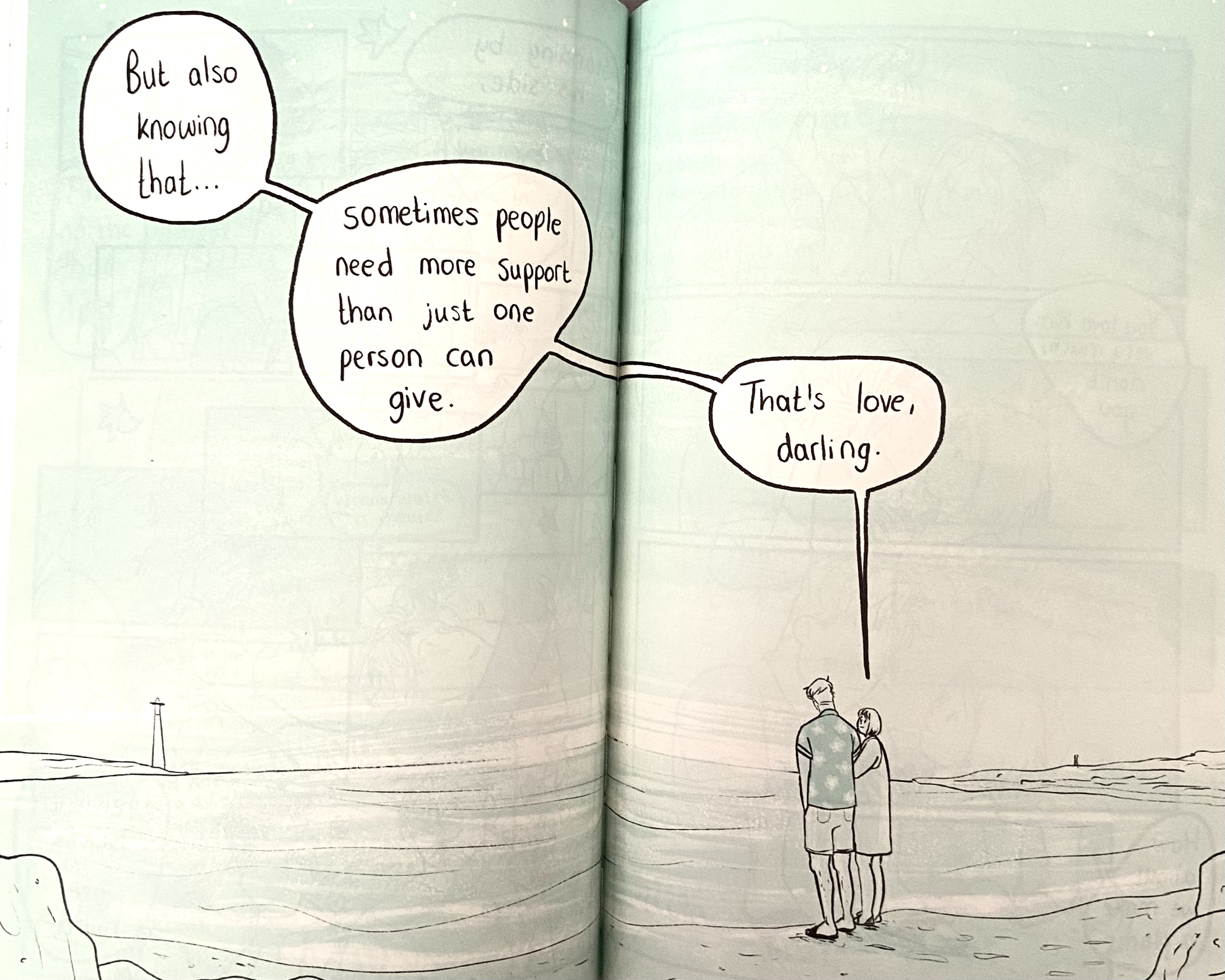
This webcomic helps people recognize the signs of mental illness in themselves or somebody else. It helps them understand what might happen once they begin to get help (psychiatric hospital, therapists, meal plans, etc.). But above all, this volume of Heartstopper’s main theme is how mental illness fits into relationships, and how it intermingles with love. Thinking that love means throwing every part of yourself into a relationship and sacrificing your own mental health for it is unhealthy, and this volume expels that belief and shows that real love is sometimes stepping back and letting somebody more qualified help your loved one.
Heartstopper’s Normalization Of Mental Health And Its Impact
Heartstopper is a YA webcomic, meaning that inevitably, its main audience is composed of preteens and young adults. Its educational themes on love, relationships, friendships, homophobia, and mental health are particularly impactful for preteens and teens. While adults can and have certainly learned from these books as well, Heartstopper is particularly important for younger demographics who are just entering the dating scene or who are beginning to figure themselves out as people because of its relatability and realism.
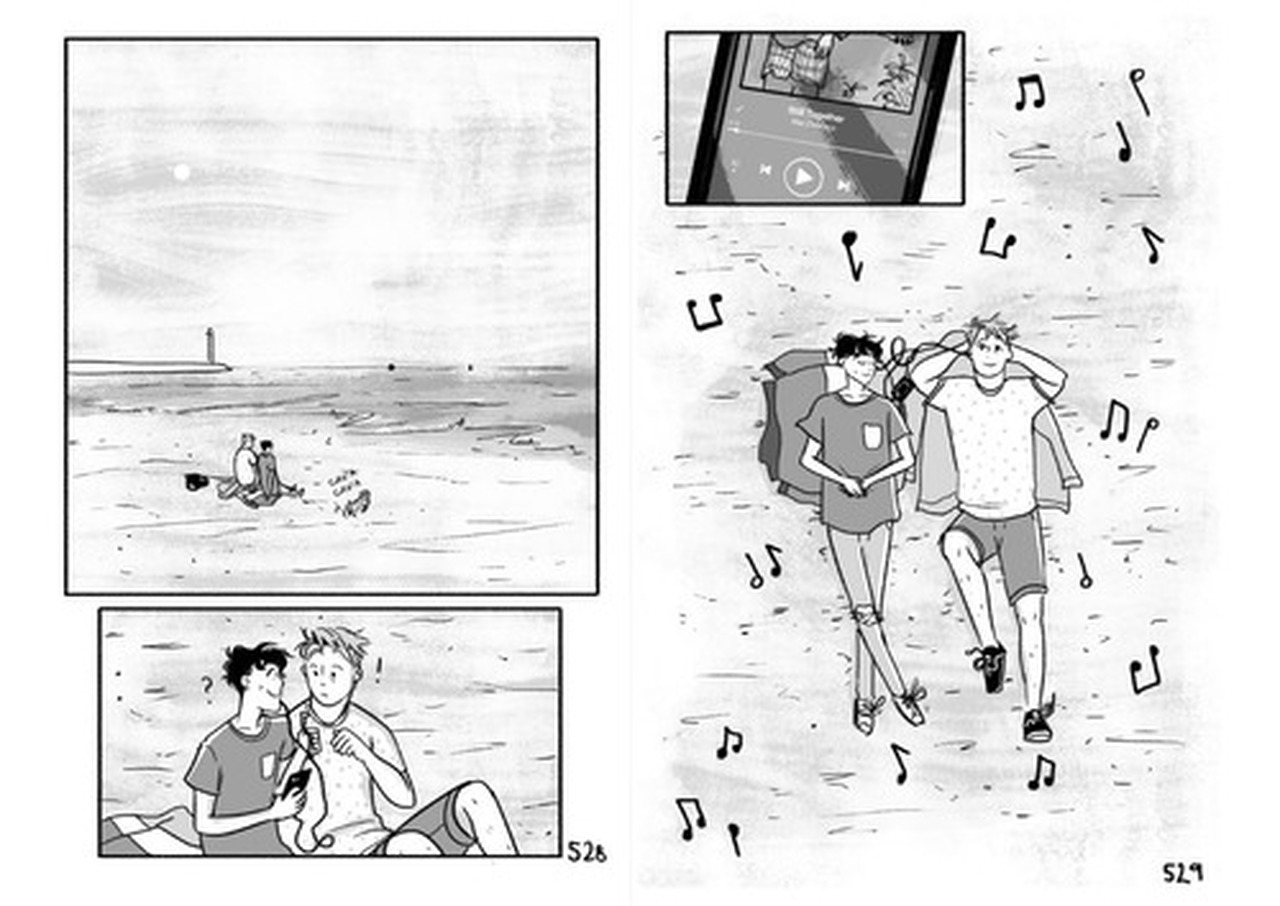
Mental health has taken a center stage in YA literature nowadays, such as Atypical (2017-2021) and Darius the Great Is Not Okay (2018). From depression to autism, ADHD to OCD, many novels and webcomics are sparking conversations around mental health and are attempting to normalize it. And it has worked. Therapy is more or less normal to talk about between teens, meaning more are going and seeking the help they need. This shows that fictional media, from books to TV to movies, has real-life impacts on people, their awareness of mental health, and their willingness to get help.
The Powerful Message Of Heartstopper
The main reason why Heartstopper is so powerful in its message is that the characters are relatable without feeling “preachy.” It doesn’t feel like a therapist giving the reader medical advice; it doesn’t feel like a boring class that feels forced or cringe. Many of the lessons in this volume and the webcomic as a whole are subtle, such as the lesson on dependency in relationships. It’s only until Nick’s mother points out how much they are relying on each other that the reader can see that Charlie has been relying on Nick for a majority of supporting his mental health, something that is quiet yet insidious and can become unhealthy if not pointed out.
Charlie is a relatable and realistic character with flaws. He’s a three-dimensional character; he feels like a real person. He’s a little awkward, introverted, insecure, loving, attentive, and sweet. Many people automatically relate to Charlie, and those that don’t are able to empathize with him with how well his character is written. This is the cornerstone for talking about mental health in literature. Creating a relatable character, that isn’t defined solely by their mental health, that the audience loves and would hate to see hurt means that people are more likely to identify with them and seek help. After all, if this character can get help, why can’t they?
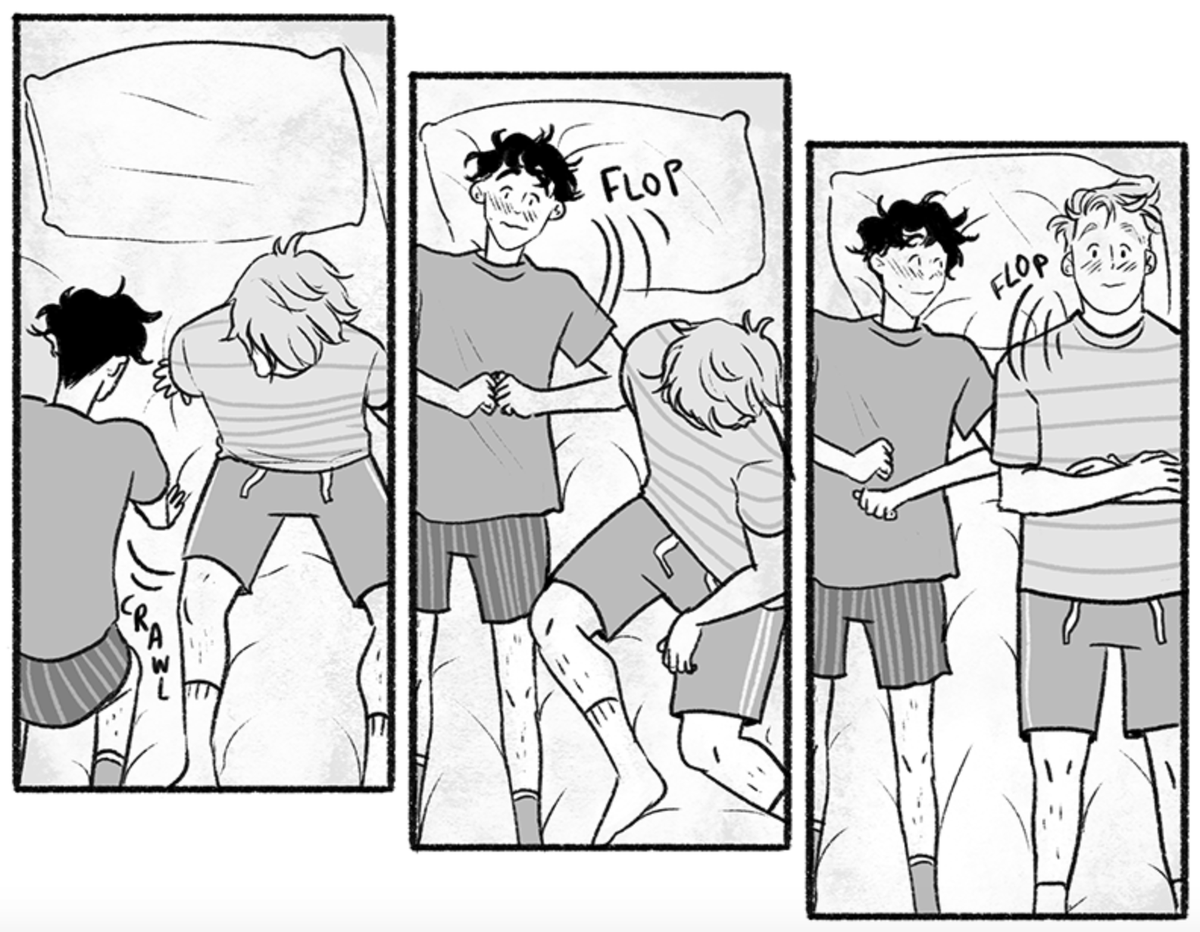
Books like Heartstopper create courage in people who need help. Mental illness isn’t just a “girl’s thing,” as Charlie worries about. Many are worried that their parents won’t take them seriously, or that it’s all in their head, or that seeking out help is scary. The negative portrayals of psychiatric hospitals surely don’t help. And while Heartstopper is a fluffy, wholesome book most of the time where mostly everybody is accepting and understanding, it highlights important problems that teens might run into when getting help and need to be prepared for.
For example, Charlie gets referred to an eating disorder service in September, but the waiting list is so long that he’ll only be able to get an appointment in January, leading to his worsening mental health and his stay in the ER. This highlights the inadequate mental health services and lack of support for those with mental illnesses, which can lead to disastrous results. Heartstopper isn’t set in some land where there are therapists on call and individual care for everybody with eating disorders; it is set in reality, and while it’s grim, it’s important to show the problems in the system in order to create change.
Additionally, the webcomic discusses that going to a psychiatric hospital doesn’t completely cure somebody’s problems. Charlie still has anorexia and OCD when he leaves the hospital, but he had a place away from school and his loved ones to truly focus on himself and now has meal plans and a therapist to supplement his journey. This dispels the belief that one visit to the psychiatric hospital is enough to cure everything. The recovery journey can seem daunting when told this way, but preteens and teens need to know that it can be done, and with professional help and a lot of love and support, they can be well again.
Heartstopper (2018-Present) And Its Legacy
Heartstopper is the type of book that should be taught in schools, and some people are starting to agree. It can help out so many teens figuring out their sexuality, their mental health, their romantic and platonic relationships, among other things. And it’s not just for teens, either. Adults can benefit from these books as well, especially if they deal with trauma or did not experience these issues in their childhood. The webcomic even introduces Mr. Farouk, a 26-year-old science teacher who only came to terms with his sexuality in his mid-twenties and missed out on a lot of “gay experiences,” as he says. It’s an important representation for those who don’t have everything figured out by age 16.

One can only imagine the amount of media that will take after Heartstopper once people realize how important the lessons portrayed in it are. The lessons are integrated well into the story and don’t feel sanctimonious, but as if it cares about its characters and putting these lessons out into the world. One can hope that the Netflix series does as good of a job as the books and Webtoon and reaches a more mainstream audience. Heartstopper should become a staple in young adult literature, and as more volumes come out, its importance to everybody only grows.
